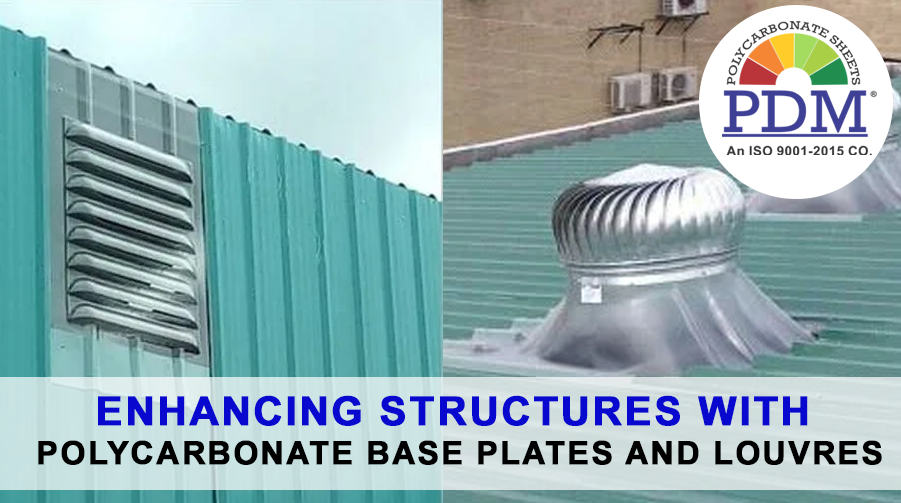Introduction:
In the ever-evolving landscape of architectural design and construction, the quest for materials that seamlessly blend functionality with aesthetics is perpetual. Enter polycarbonate—a versatile and robust material that has been revolutionizing the industry. Today, we delve into the realm of polycarbonate base plates and louvres, exploring how these innovative components are elevating structures worldwide.
Unveiling PDM Polycarbonate Base Plates:
PDM Polycarbonate base plates represent a paradigm shift in structural support systems. Engineered to withstand extreme loads and environmental conditions, these plates provide a solid foundation for a wide range of applications. From industrial complexes to commercial buildings, polycarbonate base plates offer unmatched strength and durability.
Strength Meets Style: Louvres Reinvented
Louvres, traditionally crafted from metal or wood, have long been essential for ventilation and sun control in architectural design. However, the introduction of polycarbonate louvres has transformed this fundamental element into a symbol of modernity and sophistication. With their sleek profiles and translucent properties, polycarbonate louvres marry form and function with unparalleled elegance.
The Benefits of Polycarbonate:
- Strength and Durability: Polycarbonate boasts exceptional impact resistance, making it ideal for high-traffic areas and harsh climates. Its inherent durability ensures longevity, reducing maintenance costs over time.
- Transparency: Unlike traditional building materials, polycarbonate allows natural light to permeate spaces, creating a bright and inviting atmosphere. This not only enhances occupant comfort but also reduces the need for artificial lighting, promoting energy efficiency.
- Design Flexibility: Polycarbonate can be molded into virtually any shape or size, offering architects and designers unparalleled creative freedom. Whether used as base plates or louvres, its versatility knows no bounds.
- UV Resistance: With built-in UV protection, polycarbonate retains its clarity and strength even after prolonged exposure to sunlight. This makes it an ideal choice for outdoor applications where aesthetics and performance are paramount.
Applications:
The applications of polycarbonate base plates and louvres are as diverse as they are impactful:
- Facade Systems: Enhance the visual appeal of buildings while improving energy efficiency with polycarbonate louvres.
- Skylights and Canopies: Create inviting and well-lit spaces by incorporating polycarbonate base plates into skylight and canopy designs.
- Greenhouses: Harness the power of natural light for optimal plant growth and productivity in polycarbonate-clad greenhouses.
- Privacy Screens: Strike the perfect balance between privacy and openness with polycarbonate louvres in outdoor spaces.
Conclusion:
As architects, builders, and designers continue to push the boundaries of innovation, polycarbonate base plates and louvres stand as shining examples of what’s possible. With their unrivalled strength, versatility, and aesthetic appeal, these components are reshaping the way we approach structural design. Whether it’s maximizing natural light, enhancing ventilation, or simply adding a touch of modernity, polycarbonate is paving the way for a brighter, more beautiful future in architecture and construction.



